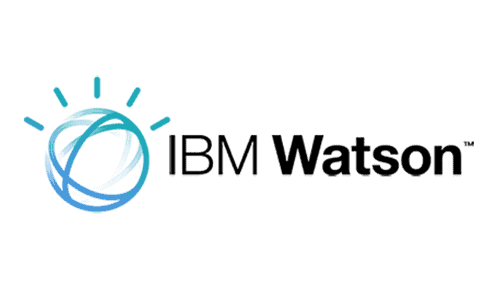Contact centres are the lifeblood of customer service for many businesses. Done well, they build strong relationships, resolve issues, and even drive sales. Done poorly, they can frustrate customers and damage brand reputation. In today's digital age, understanding the nuances of technology, data, and customer experience is crucial for success. Let's explore some key aspects:
Choosing the Right Technology: Cloud vs On-Premise
The backbone of any contact centre is its technology infrastructure. The choice between cloud-based and on-premise solutions often comes down to:
Cloud Solutions (Pros):
- Scalability: Easily adjust to changing call volumes.
- Flexibility: Access from anywhere with an internet connection.
- Lower Upfront Costs: No need for extensive hardware investment.
Cloud Solutions (Cons):
- Potential Security Concerns: Requires careful vetting of providers.
- Dependence on Internet Connectivity: Issues if your connection is unstable.
On-Premise Solutions (Pros):
- Greater Control: You own and manage the hardware.
- Potentially Better Data Security: If you have stringent security requirements.
On-Premise Solutions (Cons):
- Higher Initial Costs: Significant investment in servers and infrastructure.
- Less Scalable: Expanding requires additional hardware.
The right choice depends on your budget, needs, and risk tolerance.
Improving Call Control: Strategic Implementation
Effective call control ensures smooth call routing, efficient agent allocation, and a positive customer experience. A strong strategy includes:
- Intelligent Call Routing: Direct calls to the most suitable agent based on skills or customer history.
- Queue Management: Minimise customer wait times with proper queue prioritisation and overflow management.
- Real-time Monitoring: Track call metrics to identify bottlenecks and make adjustments as needed.
The Importance of Service Levels: Meeting Customer Expectations
Service level agreements (SLAs) set clear expectations for call answer times. A typical target might be to answer 80% of calls within 20 seconds. To achieve this:
- Accurate Forecasting: Predict call volumes to ensure adequate staffing.
- Skills-based Routing: Match agents to callers based on expertise.
- Regular Monitoring and Adjustment: Use real-time data to make necessary changes to staffing or processes.
Call Occupancy & Call Handling Times: Blending Workloads
Balancing call occupancy (the percentage of time an agent spends on calls) with call handling times is crucial.
- Workforce Management Software: Can help optimise agent schedules to match call volumes.
- Multi-skilling: Train agents to handle different types of inquiries to keep them engaged during lulls.
- After-call Work Time: Allocate sufficient time for agents to complete tasks after each call.
Skills-Based Routing: Maximising Agent Expertise
Routing calls to agents based on their specific skills ensures faster resolution and happier customers. This requires:
- Skill Assessment: Clearly define the skills required for different call types.
- Agent Profiling: Regularly assess and update agent skill levels.
- Dynamic Routing: Use technology to match callers with the most qualified agents.
Eliminating Unnecessary Calls: IVR & Self-Service
Interactive Voice Response (IVR) systems and online self-service portals can drastically reduce call volumes:
- Intuitive IVR Menus: Make it easy for customers to find the information they need.
- Robust Self-Service Options: Offer comprehensive FAQs, tutorials, and online support.
- Analyse Call Reasons: Identify common issues and create content to address them proactively.
Customer Experience (Cx): Building a Customer-Centric Culture
The contact centre is often the face of your brand. A positive Cx can foster loyalty and advocacy.
- Empower Agents: Give them the autonomy and tools to resolve issues effectively.
- Emphasise Empathy: Train agents in active listening and empathetic communication.
- Gather Feedback: Regularly survey customers to gauge satisfaction and identify areas for improvement.
The Value of Omnichannel: Seamless Customer Service
Customers expect to interact with businesses seamlessly across multiple channels (phone, email, chat, social media).
- Integrated Platforms: Use a unified system to manage all interactions, giving agents a 360-degree view of the customer.
- Consistent Messaging: Ensure brand voice and service levels are consistent across all channels.
Workflow Optimisation: Streamlining for Efficiency
Efficient workflows reduce call handling times and improve agent productivity.
- Process Mapping: Visualise the steps involved in each call type to identify bottlenecks.
- Automation: Use technology to automate repetitive tasks, freeing agents to focus on complex issues.
- Regular Review: Continuously evaluate and refine processes for optimal performance.
Data as a Secret Weapon: Insights for Improvement
Contact centre data is a goldmine of insights. Use analytics to:
- Identify Trends: Spot patterns in call volumes, customer issues, or agent performance.
- Personalise Service: Tailor interactions based on customer history and preferences.
- Measure Performance: Track key metrics like call resolution rates, customer satisfaction, and agent productivity.
Mapping the Customer Journey: A Holistic View
The contact centre is just one touchpoint in the broader customer journey.
- Understand the Journey: Analyse how customers interact with your brand across all channels.
- Identify Pain Points: Look for areas where customers might experience frustration or drop off.
- Optimise the Experience: Use data and feedback to make the entire journey as smooth and positive as possible.
Conclusion
Contact centres are the cornerstone of customer engagement in today's business world. By embracing the right technology, optimising processes, and fostering a customer-centric culture, your contact centre can become a source of competitive advantage, driving loyalty and growth.




